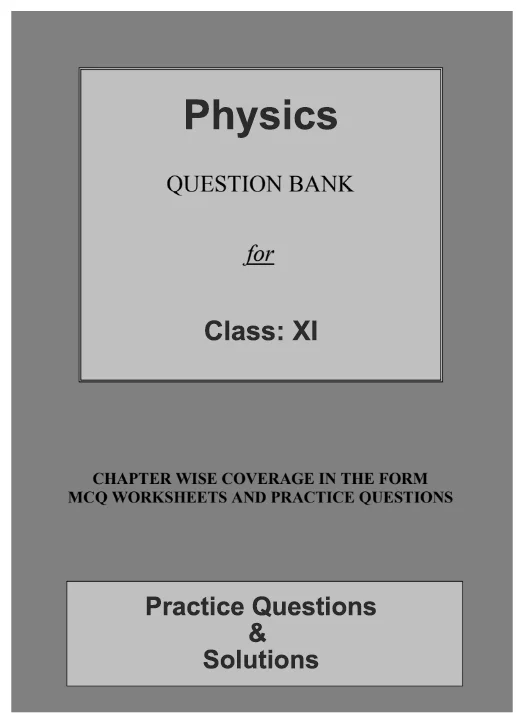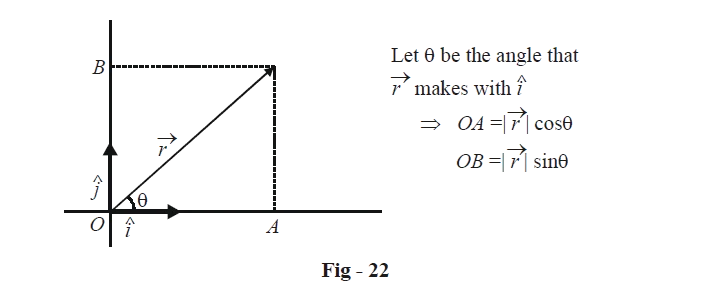Vectors are powerful mathematical entities used to represent quantities with both magnitude and direction. The resolution of vectors is a key concept that allows us to break down a vector into its components, providing insights into the underlying forces and motions. In this blog post, we'll explore the significance of vector resolution, its methods, and real-world applications.
Understanding the Resolution of Vectors Breaking Down Forces and Motion :
What is Vector Resolution?
Vector resolution involves breaking a vector into two or more component vectors that are perpendicular to each other. These components are often along specific axes, such as horizontal and vertical. The process allows us to analyze the impact of a vector in different directions, simplifying complex problems in physics, engineering, and various other fields.
Methods of Vector Resolution:
1. Rectangular Components:
One common method of resolution involves expressing the vector in terms of its horizontal and vertical components. If the vector is V, with magnitude V and angle θ with the positive x-axis, the rectangular components are given by:
V, with magnitude V and angle θ with the positive x-axis, the rectangular components are given by:
vx=vcos0
vy=vsin0
These components are often referred to as the horizontal and vertical components, respectively.
2. Polar Components:
Another method involves expressing the vector in polar coordinates. If the vector is V with magnitude V and angle θ, the polar components are given by:
Vr=Vcos0
V0=Vsin0
Here, Vr is the radial component, and V0 is the tangential component.
CBSE Class 11th Downloadable Resources:
| 1. CBSE Class 11th Topic Wise Summary | View Page / Download |
| 2. CBSE Class 11th NCERT Books | View Page / Download |
| 3. CBSE Class 11th NCERT Solutions | View Page / Download |
| 4. CBSE Class 11th Exemplar | View Page / Download |
| 5. CBSE Class 11th Previous Year Papers | View Page / Download |
| 6. CBSE Class 11th Sample Papers | View Page / Download |
| 7. CBSE Class 11th Question Bank | View Page / Download |
| 8. CBSE Class 11th Topic Wise Revision Notes | View Page / Download |
| 9. CBSE Class 11th Last Minutes Preparation Resources | View Page / Download |
| 10. CBSE Class 11th Best Reference Books | View Page / Download |
| 11. CBSE Class 11th Formula Booklet | View Page / Download |
Being in CBSE class 11th and considering the board examinations you must be needing resources to excel in your examinations. At TestprepKart we take great pride in providing CBSE class 11th all study resources in downloadable form for you to keep you going.
Below is the list of all CBSE class 11th Downloads available on TestprepKart for both Indian and NRI students preparing for CBSE class 11th in UAE, Oman, Qatar, Kuwait & Bahrain.
SAMPLE PRACTICE QUESTIONS OF SIGNIFICANT FIGURES :
Q1. What is the Resolution of Vectors?
Answer: The resolution of vectors refers to the process of breaking down a vector into its components along specified directions. It involves determining the vector's projections along coordinate axes.
Q2. Why is Vector Resolution Important?
Answer: Vector resolution is crucial for simplifying complex vector problems, especially in physics and engineering. It allows us to analyze the individual contributions of vectors along specific directions, making problem-solving more manageable.
Q3. Can Any Vector be Resolved into Components?
Answer: Yes, any vector can be resolved into components along chosen axes. This process simplifies vector operations and aids in solving problems involving multiple forces or velocities.
Q4. What are Rectangular Components of a Vector?
Answer: The rectangular components of a vector are its projections along the coordinate axes (usually x, y, and z in three-dimensional space). These components are perpendicular to each other.
Q5. How is the Resolution of Vectors Performed Graphically?
Answer: Graphically, vector resolution involves drawing the vector and constructing perpendicular lines to represent its components along specified axes. The lengths of these lines represent the magnitudes of the vector components.

| Class 11th CBSE Physics Chapters |
| Chapter1: UNITS AND MEASUREMENTS |
| Chapter2: MOTION IN A STRAIGHT LINE |
| Chapter3: MOTION IN A PLANE |
| > Introduction |
| > Scalars and vectors |
| > Multiplication of vectors by real numbers |
| > Addition and subtraction of vectors – graphical method |
| > Vector addition – analytical method |
| > Motion in a plane |
| > Motion in a plane with constant acceleration |
| > Uniform circular motion |
| Chapter4: LAWS OF MOTION |
| Chapter5: WORK, ENERGY AND POWER |
| Chapter6: SYSTEM OF PARTICLES AND ROTATIONAL MOTION |
| Chapter7: GRAVITATION |
| Chapter8: MECHANICAL PROPERTIES OF SOLIDS |
| Chapter9: MECHANICAL PROPERTIES OF FLUIDS |
| Chapter10: THERMAL PROPERTIES OF MATTER |
| Chapter12: KINETIC THEORY |
| Chapter13: OSCILLATIONS |
| Chapter14: WAVES |
| Class 11th CBSE Chemistry Chapters |
| Chapter1: SOME BASIC CONCEPTS OF CHEMISTRY |
| Chapter2: STRUCTURE OF ATOMS |
| Chapter3: CLASSIFICATION OF ELEMENTS AND PERIODICITY IN PROPERTIES |
| Chapter4: CHEMICAL BONDING AND MOLECULAR STRUCTURE |
| Chapter5: THERMODYNAMICS |
| Chapter6: EQUILIBRIUM |
| Chapter7: REDOX REACTIONS |
| Chapter8: ORGANIC CHEMISTRY – SOME BASIC PRINCIPLE AND TECHNIQUES |
| Chapter9: Hydrocarbons HYDROCARBONS |
| Class 11th CBSE Mathematics chapter |
| Chapter1: SETS |
| Chapter2: RELATIONS AND FUNCTIONS |
| Chapter3: TRIGONOMETRIC FUNCTIONS |
| Chapter4: COMPLEX NUMBER AND QUADRATIC EQUATIONS |
| Chapter5: LINEAR INEQUALITIES |
| Chapter6: PERMUTATIONS AND COMBINATIONS |
| Chapter7: BINOMIAL THEOREM |
| Chapter8: SEQUENCES AND SERIES |
| Chapter9: STRAIGHT LINES |
| Chapter10: CONIC SECTIONS |
| Chapter11: INTRODUCTION TO THREE-DIMENSIONAL GEOMETRY |
| Chapter12: LIMITS AND DERIVATIVES |
| Chapter13: STATISTICS |
| Chapter14: PROBABILITY |
| Class 8 Link soon |
| Class 9 Link soon |
| Class 10 Link soon |
| Class 12 Link soon |


Leave a Reply